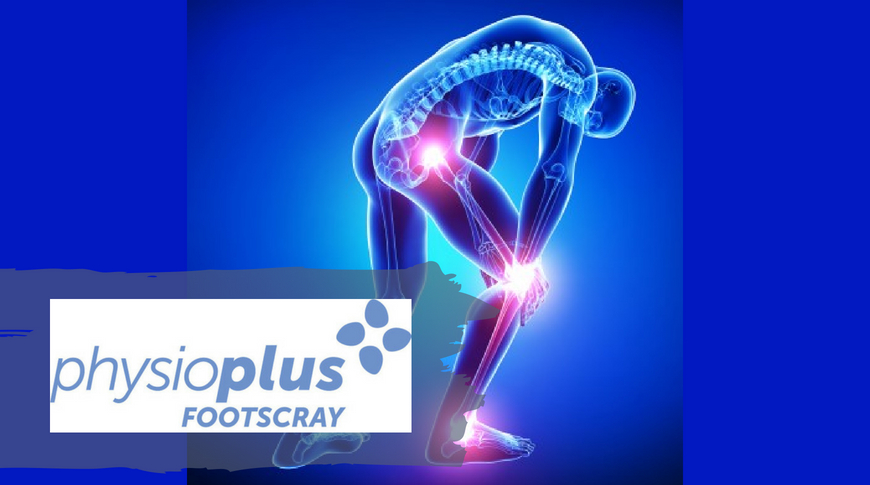
MOVING THROUGH PAIN – PHYSIO PLUS
Moving through Pain – Monique Rowlands – Physio Plus Footscray
Should I be exercising whilst I am in pain? If so, when and how much? This is a topic of conversation that we often discuss with patients who are coming to physio because pain is limiting or inhibiting their current function.
The AIHW reports that in 2014-15 musculoskeletal conditions affected 30% of all Australians, and of these 61% were of working age. In 2008-09, musculoskeletal conditions were considered the 4th highest healthcare related expenditure, after cardiovascular disease, oral health and mental disorders. Overall, musculoskeletal conditions cost Australians over $5.5 Billion annually.
Not only is pain a financial burden, but there is a strong negative impact on quality of life; affecting involvement in self-care, family, work and social activities. Therefore, it is clear why pain and mental health are inextricably linked – depression, anxiety, stress, fear avoidance behavior.
Physiotherapy plays a crucial role in intercepting the progression of symptoms and secondary effects. Research guiding our practice has shifted over the last 10 years to focus on a more active and patient driven approach. Therefore, questions around physical activity in the management of pain are extremely relevant.
In order to best answer these questions and ultimately relieve/ manage pain, it is important to determine the type of pain we are dealing with. As we know, pain can be complex and have different/ multiple origins.
Classifications of Pain
Acute
– Somatic – mechanical overload – pressure, temperature, stretch, (bones, muscles, skin etc.)
– Visceral – related to organ and smooth muscle function.
– Inflammatory – response to tissue damage resulting in an inflammatory reaction – aides healing. Usually latent to time of injury, often experiencing night pain and constant in nature.
Chronic
– Symptoms that have an objective pathogenic, genetic, or biologic origin – osteoarthritis [OA], rheumatoid arthritis [RA], systemic inflammatory rheumatic diseases, connective tissue diseases, post-herpetic neuralgia, and peripheral neuropathy.
– Idiopathic source with unknown origin, diagnosis is largely based on a patient’s subjective report – continuous pain and may include secondary issues of fatigue, sleep disturbance, cognitive deficits and depression – complex regional pain syndrome (CRPS), fibromyalgia (FM), chronic widespread pain (CWP), subgroups of chronic low back pain (LBP), and chronic pelvic pain (CPP).
Therefore, as we continue to discuss the role of exercise in the treatment of pain, it is important that professional advice is sought before implementing any of the suggested forms of exercise.
Role of exercise in an Acute Setting
Studies show that peripherally driven acute and sub-acute pain responds well to moderate – high intensity aerobic exercise. This appears to be the level of exertion required to increase the level of hormones and chemicals linked to regulation of pain. Resistance based exercise provides comparable results and can be done in isolation or combined with aerobic activity. Exercise should be generalized to whole body movements and does not need to target a specific area or joint to successfully aide in pain reduction.
As we have established there are different causes behind acute/ sub-acute pain, it is important to address these issues prior to, or during exercise. For example, it may be inappropriate to exert an acute muscle strain to the levels described above due to the risk of promoting further injury, excessive inflammation or swelling. It is for these reasons, we recommend seeking your physio’s advice prior to commencing exercise.
Role of Exercise in a Chronic Setting
Physical activity within a chronic pain population has created significant controversy within the research. The point of contest lies around whether the benefits of exercise can out way the negatives which can result in increased pain and fatigue. In the past it was believed that this was not possible. However, in the last 10 years we have seen a change in opinion. In combination with pharmacological therapy and cognitive behavioral therapy, exercise enables a significant reduction in pain. As everybody’s experience with chronic pain is unique – treatment must be individualized to the person.
A few key points that are consistent across the research are:
- Exercise should be fun – selected according to patient preference
- Tailored to individual goals/ lifestyle
- Individual strengths and limitations must be considered
- A mix of aerobic, resistance and flexibility training – closely monitor eccentric strengthening
- Incorporate use of nonpainful body parts.
- Better to make first session too easy than too hard.
- Lots of rest between sets, breaks can be longer than average
- Minor flares in pain are normal, should avoid long term flares in pain
- Exercise must be part of a weekly routine that is maintained.
Routine exercise as part of a multimodal approach is strongly recommended in the management of chronic pain. Not only is this approach effective in pain management but is positively geared towards changes in mood/ depression, anxiety, stress, sleep and overall quality of life.
Remember!
Next time you are faced with the complex process of managing pain – whether it be your own or someone else’s, talk to someone about ways to safely get active as soon as possible!
Author – Monique Rowlands, works out of the Footscray office of Physio Plus and is available for contact via www.physioplus.com.au, the practice email footscray@physioplus.com.au or phone (03) 9689 0222.
